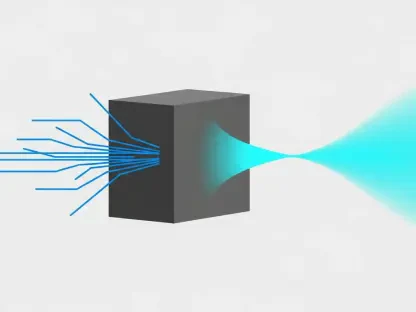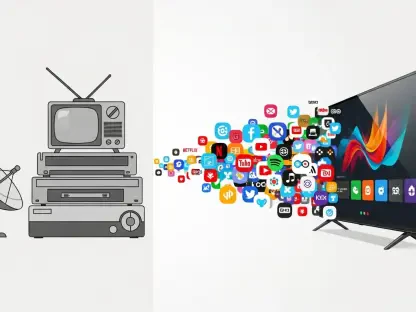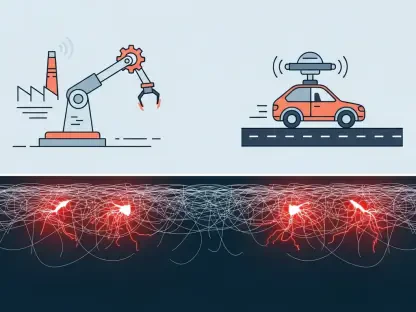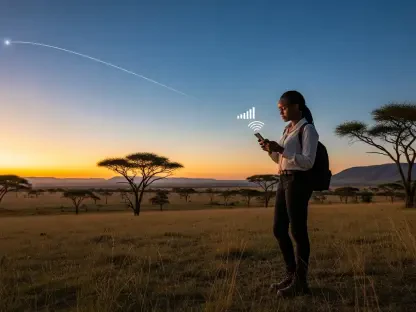I’m thrilled to sit down with Vladislav Zaimov, a seasoned telecommunications specialist with deep expertise in enterprise solutions and risk management for vulnerable networks. With years of experience navigating the complexities of broadband technology and network security, Vladislav offers a unique perspective on the evolving landscape of wireless connectivity. In this conversation, we dive into the transformative potential of licensed spectrum, the challenges faced by wireless internet service providers, and the innovative technologies reshaping broadband access in the United States. We also explore how strategic partnerships and cutting-edge platforms are helping bridge the digital divide and deliver fiber-like performance at a fraction of the cost.
Can you walk us through what LMDS spectrum is and why it’s such a critical piece for expanding broadband access across the U.S.?
Absolutely, Diane. LMDS, or Local Multipoint Distribution Service, is a type of licensed spectrum in the millimeter wave band, typically used for high-speed wireless communication. It’s a game-changer for broadband access because it offers exclusive, interference-free bandwidth, which is essential for delivering reliable, high-capacity connections. In the U.S., where many areas still lack adequate internet, LMDS spectrum allows providers to deploy multi-gigabit speeds without the prohibitive costs of laying fiber. It’s particularly valuable for reaching rural or underserved regions, making it a cornerstone for closing the digital divide.
How does having access to a large amount of licensed spectrum empower providers to scale their broadband coverage, especially in challenging markets?
Holding a significant portion of licensed spectrum, like LMDS, gives providers a massive advantage in scaling coverage. It means they can operate across vast geographic areas—think thousands of counties—without worrying about interference from other networks. This exclusivity translates to consistent performance, which is critical for expanding into markets like enterprise or multi-tenant environments where reliability is non-negotiable. It also allows providers to build out networks faster and more cost-effectively compared to traditional wired solutions, especially in areas where terrain or economics make fiber deployment impractical.
What sets licensed spectrum apart from unlicensed spectrum when it comes to delivering reliable and high-performing internet services?
The key difference is control. Licensed spectrum is exclusive to the holder, meaning there’s no competition for bandwidth, which drastically reduces interference and ensures a stable connection. Unlicensed spectrum, on the other hand, is a free-for-all—anyone can use it, leading to congestion and unpredictable performance, especially in densely populated areas. For high-stakes applications like business or government services, licensed spectrum provides the carrier-grade reliability and security that unlicensed options simply can’t match. It’s like having a private highway versus a crowded public road.
In what ways does licensed spectrum support wireless internet service providers in growing their businesses, particularly for enterprise clients?
Licensed spectrum is a lifeline for wireless internet service providers, or WISPs, looking to grow. It enables them to offer fiber-like speeds and reliability, which are must-haves for enterprise clients who demand consistent uptime and robust security. This opens doors to new verticals—think large businesses, government contracts, or multi-tenant buildings—where high-performance connectivity is a deal-breaker. With licensed spectrum, WISPs can confidently scale their operations, knowing they have the bandwidth and stability to meet stringent service-level agreements.
How does licensed spectrum help WISPs connect hard-to-reach or cost-prohibitive areas compared to traditional fiber solutions?
Fiber is fantastic, but it’s incredibly expensive and time-consuming to deploy, especially in rural or remote areas where the return on investment might be low. Licensed spectrum, paired with fixed wireless access technology, allows WISPs to bypass those barriers. They can set up high-speed connections quickly and at a fraction of the cost, reaching communities that might otherwise be left behind. It’s about delivering broadband where fiber can’t go—whether due to rugged terrain, sparse population, or budget constraints—without sacrificing performance.
What are some of the biggest hurdles WISPs face in delivering high-speed internet, and how can strategic partnerships help overcome them?
WISPs often grapple with challenges like interference, limited range, and environmental factors such as weather, especially when using higher-frequency bands like millimeter wave. There’s also the issue of securing spectrum and managing network security in an increasingly complex digital landscape. Strategic partnerships can address these by combining resources—think access to licensed spectrum with advanced technology platforms. By working together, companies can tackle interference through exclusive bandwidth and mitigate other issues with innovative engineering, ensuring WISPs can deliver reliable service no matter the conditions.
How does access to licensed spectrum specifically mitigate issues like interference or security concerns for WISPs?
Licensed spectrum is inherently protected from interference because it’s reserved for exclusive use. Unlike unlicensed bands where multiple providers might clash, causing dropped connections or slowdowns, licensed spectrum ensures a clear, dedicated channel. On the security front, this exclusivity also means it’s easier to safeguard data transmissions, as there’s less risk of unauthorized access or overlapping signals. For WISPs, this translates to a more dependable and secure network, which is critical for maintaining customer trust and meeting regulatory standards.
Can you share insights on how advanced millimeter wave technology addresses traditional limitations like weather or distance in broadband delivery?
Millimeter wave technology has historically struggled with obstacles like rain fade or limited range due to its high-frequency nature. However, recent advancements have made huge strides in overcoming these limitations. New platforms use techniques like hybrid massive beamforming to focus signals more precisely, extending range and maintaining performance even in adverse weather. These innovations mean providers can now deliver multi-gigabit speeds over longer distances with minimal degradation, making millimeter wave a viable alternative to fiber in many scenarios.
Why is the combination of licensed spectrum and cutting-edge technology considered a breakthrough for the wireless industry?
It’s a breakthrough because it merges the best of both worlds: the reliability and security of licensed spectrum with the high-capacity, low-latency capabilities of modern wireless tech. This combo delivers a true fiber-like experience—think multi-gigabit speeds and sub-10-millisecond latency—without the astronomical costs of physical infrastructure. For the wireless industry, it levels the playing field, allowing smaller providers to compete with larger incumbents and bring top-tier connectivity to markets that were previously out of reach.
What does this mean for smaller WISPs who historically couldn’t access licensed spectrum or afford high-end technology?
For smaller WISPs, this is a game-changer. Historically, licensed spectrum was either too expensive or simply unavailable to them, limiting their ability to scale or compete. Now, through partnerships and new business models, they can access this spectrum and pair it with advanced, cost-effective technology. This empowers them to offer premium services, expand into new territories, and serve customers who need high-speed internet the most. It’s essentially democratizing access to tools that were once reserved for the big players.
What is your forecast for the future of broadband access with the advancements in licensed spectrum and wireless technology?
I’m very optimistic about the future of broadband access. With licensed spectrum becoming more accessible and wireless technologies continuing to evolve, we’re on the cusp of a major shift. I believe we’ll see a rapid expansion of high-speed internet into underserved areas, effectively narrowing the digital divide. Fixed wireless access will increasingly rival fiber in performance, while costing far less to deploy, making connectivity more affordable for everyone. Over the next decade, I expect these advancements to redefine how we think about internet infrastructure, with wireless solutions playing a central role in connecting the unconnected.









